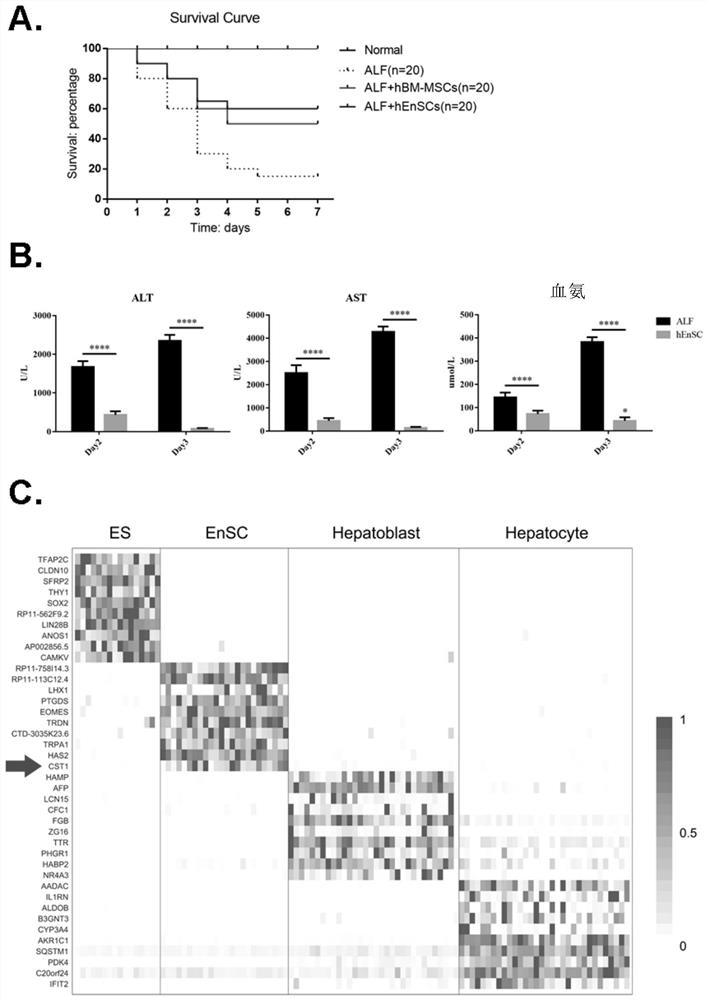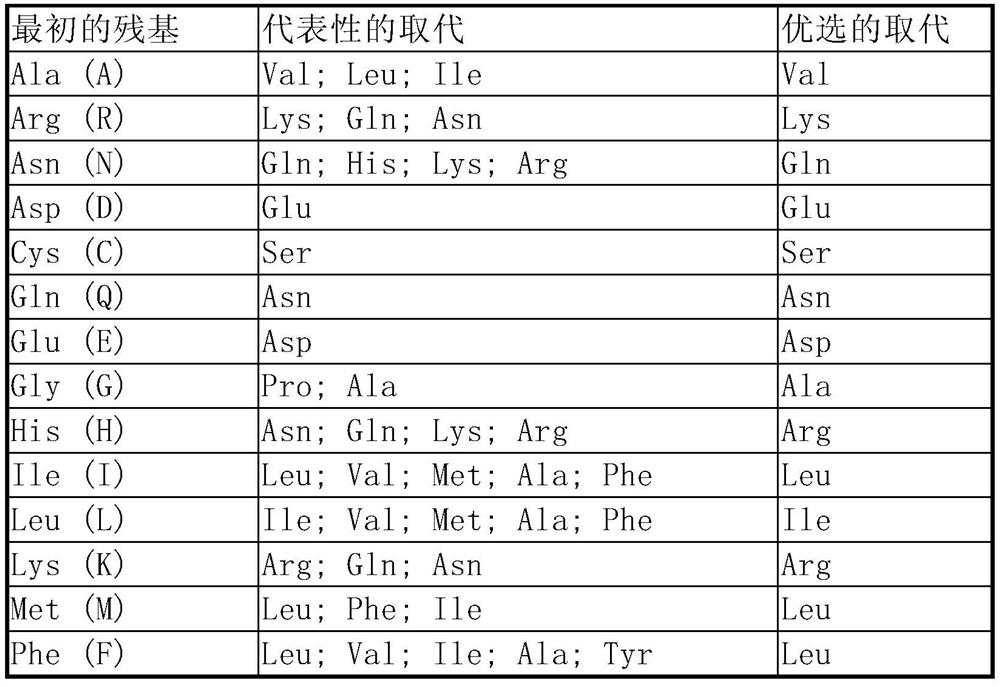Application of CST1 in prevention and/or treatment of liver immune disorder diseases
A technology for immune disorders and liver, applied in the field of biomedicine, can solve the problem of limited relief of acute liver failure
- Summary
- Abstract
- Description
- Claims
- Application Information
AI Technical Summary
Problems solved by technology
Method used
Image
Examples
Embodiment 1
[0180] Example 1 Human endoderm stem cells (hEnSCs) for the treatment of acute liver failure and analysis of active ingredients
[0181] In order to find an alternative therapy for liver transplantation to treat acute liver failure, cell therapy is one of the potential therapies. Therefore, after trying a variety of potential cell types, we found a new type that is effective for acute liver failure. A stem cell line with good therapeutic effect, namely human endoderm stem cells (hEnSCs). Through animal experiments on rats with acute liver failure, we found that transplantation of hEnSCs through the hepatic portal vein can significantly improve the survival rate of animals within one week, and the effect is slightly better than that of mesenchymal stem cells known to have a certain effect on acute liver failure (MSCs)( figure 1 A). And the liver function indexes alanine aminotransferase (ALT), aspartate aminotransferase (AST) and blood ammonia (Blood Ammonia) were all signifi...
Embodiment 2
[0184] Example 2 Validation experiment of the curative effect of CST1 protein on acute liver failure
[0185] In order to verify what we think may be the key molecule for hEnSCs to treat acute liver failure, we decided to overexpress the CST1 gene in a cell line that does not express and has no therapeutic effect on acute liver failure, if the cell line can obtain a certain therapeutic effect on acute liver failure Therefore, it shows that the CST1 gene has a certain therapeutic effect on acute liver failure.
[0186] The cell line is human embryonic stem cells (ES), and then the lentivirus is used to package the CST1 overexpression plasmid vector and infect the ES to establish the ES cell line with CST1 overexpression, that is, CST1 + ES. Then detected whether the CST1 gene was overexpressed in the established cell lines, and compared its expression with hEnSCs, ES, MSC. like figure 2 A, CST1+ES overexpresses the CST1 gene, but the expression level is still lower than tha...
PUM
 Login to View More
Login to View More Abstract
Description
Claims
Application Information
 Login to View More
Login to View More - R&D
- Intellectual Property
- Life Sciences
- Materials
- Tech Scout
- Unparalleled Data Quality
- Higher Quality Content
- 60% Fewer Hallucinations
Browse by: Latest US Patents, China's latest patents, Technical Efficacy Thesaurus, Application Domain, Technology Topic, Popular Technical Reports.
© 2025 PatSnap. All rights reserved.Legal|Privacy policy|Modern Slavery Act Transparency Statement|Sitemap|About US| Contact US: help@patsnap.com



